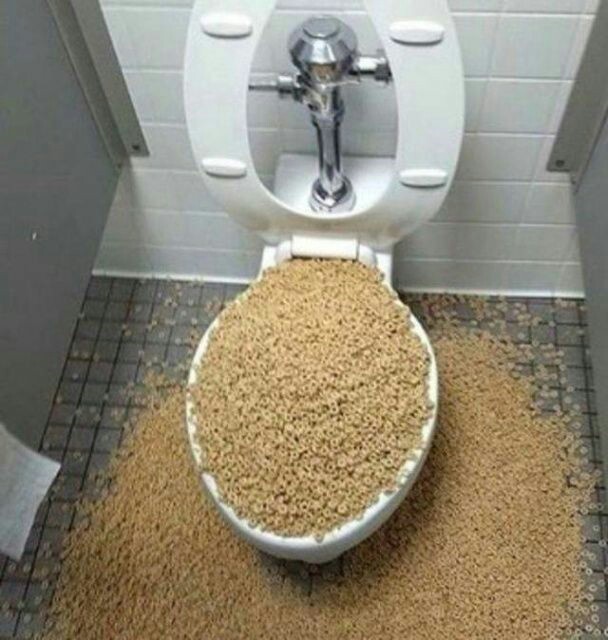On this page underneath yow will discover a lot of worthwhile help and advice relating to Flushing Food Down the Toilet?.

Intro
Lots of people are frequently faced with the dilemma of what to do with food waste, particularly when it pertains to leftovers or scraps. One typical inquiry that emerges is whether it's all right to flush food down the commode. In this write-up, we'll explore the reasons individuals may take into consideration purging food, the repercussions of doing so, and different methods for proper disposal.
Reasons individuals could take into consideration flushing food
Lack of understanding
Some individuals may not understand the possible harm triggered by flushing food down the commode. They may erroneously think that it's a safe practice.
Comfort
Purging food down the bathroom might seem like a fast and very easy solution to taking care of undesirable scraps, specifically when there's no neighboring garbage can offered.
Negligence
Sometimes, people may simply select to flush food out of sheer idleness, without taking into consideration the repercussions of their activities.
Consequences of flushing food down the toilet
Ecological effect
Food waste that winds up in waterways can add to air pollution and harm marine ecological communities. Additionally, the water utilized to flush food can stress water sources.
Plumbing concerns
Flushing food can bring about clogged up pipelines and drains pipes, causing pricey pipes repairs and troubles.
Types of food that must not be purged
Coarse foods
Foods with fibrous appearances such as celery or corn husks can obtain tangled in pipes and trigger blockages.
Starchy foods
Starchy foods like pasta and rice can absorb water and swell, bring about obstructions in pipes.
Oils and fats
Greasy foods like bacon or food preparation oils must never be flushed down the bathroom as they can solidify and trigger clogs.
Proper disposal approaches for food waste
Using a waste disposal unit
For homes geared up with waste disposal unit, food scraps can be ground up and purged through the pipes system. Nevertheless, not all foods appropriate for disposal in this fashion.
Recycling
Particular food packaging materials can be recycled, decreasing waste and minimizing environmental influence.
Composting
Composting is an eco-friendly way to deal with food waste. Organic products can be composted and made use of to enhance soil for gardening.
The relevance of proper waste administration
Decreasing ecological harm
Proper waste management techniques, such as composting and recycling, assistance reduce air pollution and protect natural deposits for future generations.
Safeguarding pipes systems
By preventing the technique of flushing food down the commode, house owners can protect against costly plumbing repair services and keep the stability of their plumbing systems.
Verdict
To conclude, while it may be tempting to purge food down the commode for convenience, it is essential to comprehend the prospective repercussions of this activity. By adopting correct waste monitoring methods and getting rid of food waste sensibly, people can contribute to much healthier pipes systems and a cleaner setting for all.
FLUSH FOOD DOWN THE TOILET?
FLUSHING FOOD CAN CAUSE BLOCKED DRAINS IN YOUR HOME
All of the plumbing fixtures in your home are connected to the same sewer pipe outside of your home. This outdoor sewer pipe is responsible for transporting all the wastewater from your home to the Council sewer mains. Even small pieces of food that go down the kitchen sink can cause problems for your sewer. It should therefore be obvious that flushing larger bits of food, such as meat, risks a clog in either the toilet itself or the sewer pipes. Flushing greasy food is even more problematic because oil coagulates when it cools, coating the interior lining of your pipes.
THE TOILET IS NOT A BIN
Food isn’t the only thing that people shouldn’t be flushing down the toilet. People use the toilet to dispose of all kinds of things such as tampons, makeup wipes, dental floss, kitty litter and even underwear. Water goes to great lengths to educate residents about the high costs and stress placed on wastewater treatment systems simply from people flushing the wrong stuff down the toilet. It costs taxpayers millions of dollars each year, and homeowners thousands in blocked drain repairs.
FLUSHING FOOD IS A WASTE OF WATER
Flushing food is a waste of our most precious resource - water. In June this year Level 1 water restrictions were introduced to protect water supply from drought conditions. Much of New South Wales continues to be affected by prolonged drought with recent figures revealing up to 97 per cent of the state remains in drought. Depending on whether you have a single or dual flush toilet, every single flush uses between five and 11 litres of water. In the current climate this is a huge amount of water to be wasting on flushing food that should be placed in the bin (or better yet, the compost).
https://www.jabplumbingsolutions.com.au/blog/can-you-flush-food-down-the-toilet

I am just very inquisitive about Think Twice Before Flushing Food Down Your Toilet and I'm hoping you appreciated my blog posting. Sharing is nice. Helping people is fun. We take joy in reading our article about Think Twice Before Flushing Food Down Your Toilet.
Details Here